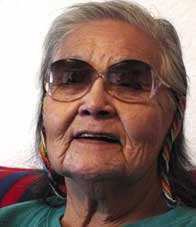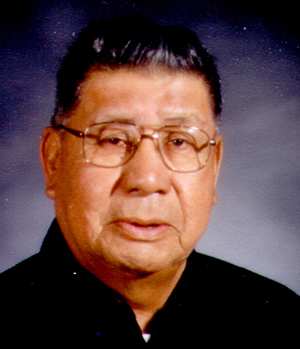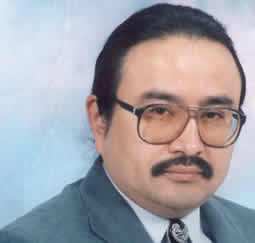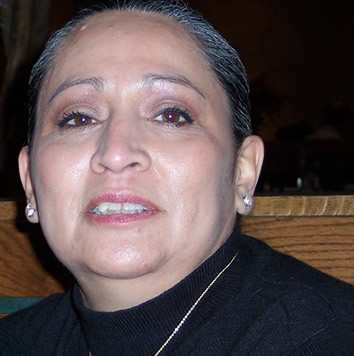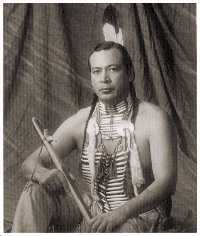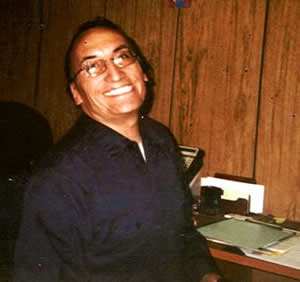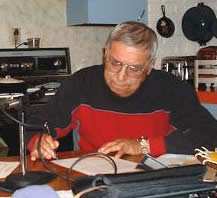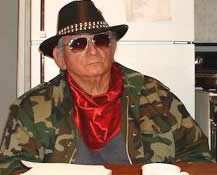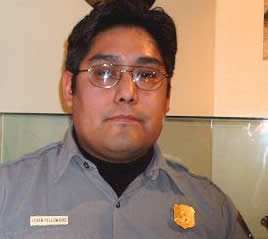North Dakota Storytellers
Zona Loans Arrow
Zona Loans Arrow was Teton Sioux (Lakota), Santee Sioux (Dakotah), and Yanktonnai (Nakota). She was born in the Porcupine District on Standing Rock Indian Reservation in North Dakota, located in the northern part of the reservation near Cannonball, North Dakota. Zona served as President for the Board of Education for Standing Rock Indian Reservation and as Vice President on the Board of Trustees for Standing Rock Community College when it became Sitting Bull College in the 1990’s. Zona is survived by eight children of her own, and was Unci (Grandmother) to many adopted children. She was a very spiritual person and eloquently encouraged native youth to pursue their education to the highest degree possible and to be good examples to their families. Zona wanted her people to go back to their own ways of respect and honor, learn their language, and practice their arts and crafts. For that reason she worked tirelessly to make sure that stories of her ancestors’ lives would be passed on, so they can serve as role models for younger generations.
Edwin Benson (Mandan)
An employee of the Bureau of Indian Affairs for the past 20 years 74-year-old Edwin Benson resides in Holiday, North Dakota. He is Mandan / Three Affiliated Tribes of the Fort Berthold Indian Reservation. The reservation is located at Twin Butts, North Dakota. As a child, he only spoke the Mandan language, Nu’itah, which translated into “one of us”. He was raised by his Mandan grandfather Ben Benson, Buffalo Bullhead, who only spoke Mandan. His grandmother, Brown Chest, was a Hidatsa (at one time called Gros Ventres) and only spoke Hidatsa, but somehow the two were able to communicate with each other.
Calvin Grinnell
Calvin Grinnell, or Running Elk, is a Hidatsa, Mandan, and Arikara tribal historian. On his father’s side, he is a descendant of Hidatsa Chief Four Bears who signed the Laramie Treaty of 1851 and was then killed in an ambush on or about 1812 by the Sioux. His grandfather on his mother’s side, Black Hawk, a sub-chief of Crow Flies High opposed the reservation system. Three Affiliated Tribes’ half million-acre reservation now surrounds the lower half of Lake Sakakawea in west-central North Dakota. Lake Sakakawea (reservoir) was created by the Garrison Dam back in the 1950s. The land is complemented by high bench lands surrounding the lake. The east side is a good farm and pasture land while the west side is rolling hills and badlands best suited for pasture land.
LaDonna Brave Bull Allard
LaDonna Brave Bull Allard is the Standing Rock Tribal Tourism Coordinator for the Standing Rock Sioux Tribe and Marketing Manager for the Alliance of Tribal Tourism Advocates. She tells stories of the history of Standing Rock and her people. The stories of Sitting Bull’s life and death as well as of Lewis and Clark and Sakakawea who died on Standing Rock. She is from Cannon Ball District of Standing Rock raised in Fort Yates, North Dakota; her father was Frank Brave Bull who was descended from Tatanka Ohitika a medicine man. LaDonna graduated from the University of North Dakota with a History degree. She has been researching winter counts, and historical document to compile her tribe history.
Keith Bear
World-renowned flute player, Keith Bear (Hidatsa and Mandan), is from the Three Affiliated Tribes in Fort Berthold, North Dakota. He is the son of Christine and John Bear of the Nagadawi Clan and related to Chief Bullseye, the adopted father of Sacajawea. On his mother’s side, they are descendants of Chief Hairy Coat, and on his father’s side, to Turtles Sitting Bull. Keith is the father of eleven children, ages 32 to 5.
Dorrance Comes Last
Leo John Lockwood lives on the Fort Berthold Indian Reservation in western North Dakota. His tribal affiliation is Arikara. His mother is Cecelia Dragswolf and his father is Melvin Starr. His maternal grandmother Mary Howling Wolf was a midwife and delivered many of the children in the tribe. She also took in many children and cared for them as her own. Leo’s maternal grandfather, Edward Lockwood, was known for his skills as a cowboy and powwow singing. His paternal grandparents, Jenny Spotted Horse and John Starr were caretakers of tribal medicine bundles. Migrating north along the Missouri River, the Arikara lived in the bottomlands before the building of the dams. They lived in earth lodges numbering into the thousands before the smallpox epidemic, which wiped out the major part of the Arikara. Today the Arikara live along the lake that was created by the dam and along the Missouri River in six communities within the Fort Berthold Reservation.
Rodney Howling Wolf
Rodney Howling Wolf is an Arikara elder from White Shield, North Dakota, on Fort Berthold Indian Reservation. His mother was Mabel Bear Howling Wolf, and her father, Floyd Sitting Bear, was an Arikara chief. Floyd’s father was Sitting Bear and Sitting Bear’s father was Son of the Star. Rodney’s father was Dan Howling Wolf. His grandfather, Lawrence Howling Wolf, was one of the first ministers out of the Fort Berthold Indian Reservation. The first veteran from the Howling Wolf side was a scout for Custer at the Battle of the Little Big Horn. The tribe lived from Nebraska to South Dakota and also occupied the Black Hills. At one time, they lived along the Missouri River. Due to the building of the Garrison Dam, they had to move to higher ground.
Virgil Chase
Tribal historian Virgil F. Chase, Sr. is Arikara, Mandan, Dakota, and a little Hidatsa and lives on the Fort Berthold Reservation in North Dakota. Virgil’s great grandfather, who was killed by Dakotas, was Foolish Wolf. His mother’s father was Red Bear. Virgil has his grandfather’s, Boy Chief, and Red Bears discharge papers signed by Custer. The Arikaras took part in Custer’s Last Stand. Originally the tribe lived along the Missouri River and had great gardens.
Yvonne Fox
Arikara elder, Yvonne Fox lives in the eastern part of the Fort Berthold Reservation, North Dakota. Her great grandfather, Little Sioux, was one of the scouts for Custer’s Seventh Calvary at the Battle of the Little Big Horn. Her grandmother, Anna Dawson Wilde, was raised and went to school in Hampton, Virginia. After finishing school she came back to the reservation and became a field nurse. The tribe’s sacred bundles tell of migration starting in Central America and traveling over large water and was the first recorded location along the Mississippi River. The migration continued west along the Missouri River where today village and lodge circle remains are still in existence. After the Garrison Dam flooded the bottomlands, the tribe was forced to move up to the prairie.
Loren Yellow Bird
Historian, storyteller, and song carrier, Loren Yellowbird, Sr. is a full-blooded Arikara from the Fort Berthold Reservation in North Dakota. Loren works at the Fort Union Trading Post for the National Park Service and lives in Williston, North Dakota. He is father to five boys including a set of triplets. Chief Son of the Star is from his mother’s side of the family and Medicine Men Bears Teeth is from his father’s side. Migration of the tribe started in Nebraska following the Missouri River up into central North Dakota along the Missouri River and Lake Sacajewea. The reservation is divided into three tribes: Arikara in the east, Hidatsa in the west, and Mandan in the southern part of the reservation. Before the Garrison Dam was built, the Arikara lived along the river bottoms that consisted of flat farmland. After flooding, they relocated to the plains.

